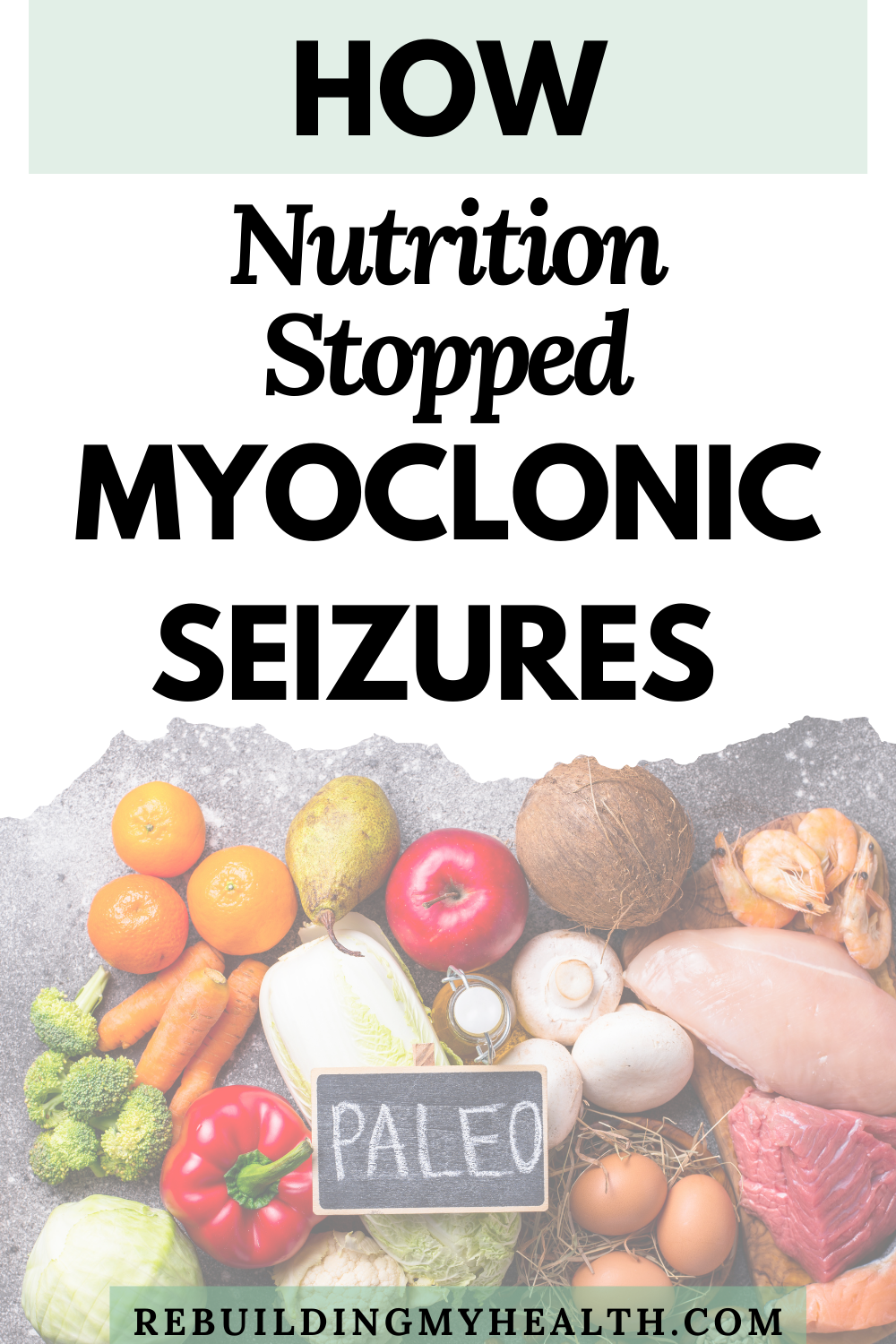Nutrition Ceases Myoclonic Seizures in Young Boy
“I noticed immediately, reducing all of that, his seizures went way, way down.”
– Anne
When Alden* started having micro seizures around seven months old, the official name – benign myoclonic seizures – belied the potentially serious effects.
“They are most certainly not benign,” says his mother, Anne Hoelz. “When you read up on that, they actually tell you about all the dangers of that kind of seizure. They’ll do brain damage if not taken care of over time.”
In fact, Alden’s seizures seemed to change their son drastically. Prior to the onset, he smiled often, and had even said “mama” a few times. But smiles and speech both ceased after a few months of the seizures.
Doctors assured the Hoelzs that their son would eventually outgrow the seizures. But not wanting to wait, they looked for ways to stop seizure activity.
“The doctor recommended seizure medication but the side effects were concerning, including vision loss,” Anne says.
Seizures Begin at Seven Months
Seizures were not the first of Alden’s struggles. He had been born two months premature and diagnosed with Down syndrome. His decreased muscle tone and motor (limb) apraxia are attributed to the latter.
When the micro seizures began around seven months, he had recently received routine vaccinations – events Anne believes may be related. At the time, he was borderline severely anemic, but the bloodwork showing that didn’t come back until after he received the vaccines. Later on, his mother learned that it may not be advisable to vaccinate a child with anemia.
“They should never, ever have given him those shots being that severely anemic,” Anne says.
She also discovered the blood-brain barrier is more open in Down syndrome children, meaning that any toxins could more easily influence neurological function.
A Nutritional Approach to Seizures
To address his seizures, Alden’s parents turned to natural approaches with a focus on nutrition. With Native Remedies Epi-Still, his seizures reduced from several clusters per day to anywhere from four to 10 single seizures per day.
They added in Dr. Christopher’s brand Kid-E-Mins and Kid-E-Calc after store-bought calcium led to a diaper nightmare. Then after starting Native Remedies Triple Complex Nerve Tonic, Alden became more alert and active.
Anne also noticed a sudden shift in his muscle tone. At around one year, Alden still needed his head supported while being carried. Immediately after the tonic, he was able to hold himself up and be carried with just one arm instead of two.
Nightshades and Seizures
At over a year old, Alden was delayed both physically and mentally, which doctors attributed to Down syndrome. However, Anne intuitively felt the delays could be related to the seizures.
To that end, she started noticing correlations between Alden’s seizures and what they both ate, since she was still breastfeeding him. His seizures spiked about 36 hours after eating green peppers on more than one occasion.
Then, after Anne ate a big eggplant dish, he suffered his worst series of seizures yet.
“It was Mother’s Day, and he had 19 seizures that day,” she recalls. “He spent the majority of the day screaming and crying and having seizures.”
She wondered what green peppers and eggplant have in common. She soon learned that the two foods are members of the nightshade family, a class of plant foods with chemical compounds called alkaloids. Common nightshades include tomatoes, potatoes (excluding sweet potatoes), eggplant, bell peppers, cayenne and paprika.
While many of these vegetables and fruits contain important nutrients, some people report experiencing inflammation or pain after eating them. Unfortunately, it’s mostly anecdotal thus far. Studies have yet to link these foods with an inflammatory response other than an allergy.
Then and there, the Hoelzs cut nightshades from their diet – and haven’t brought them back since.
“I noticed immediately, reducing all of that, his seizures went way, way down,” she says.
Anne learned just how careful they had to be after she ate mustard, which contains the nightshade, paprika, and Alden’s seizures increased again.
Dialing in a Nutrition Plan
They also found that Alden couldn’t tolerate a number of other foods, including grapes, cherries, cranberries, carrots and sweet potatoes. Reactions ranged from urinary problems to seizures.
Anne sought information on diet and Down syndrome, but mostly turned up insights on autism and diet. She discovered that a grain-free, dairy-free diet often helps children with autism, and thus, decided to try it.
Applying the same diet for Alden, she saw changes quickly. They also added digestive enzymes after finding out that he wasn’t digesting his food well.
Over the years, Anne has learned more about her son’s unique needs and biology. He carries the MTHFR gene mutation, which impacts the methylation pathways and makes it more difficult for his body to create the active form of folic acid. In the body, methylation is responsible for biochemical reactions that regulate the cardiovascular, neurological, reproductive, and detoxification systems. For that, they found the appropriate vitamin B supplementation for him.
They also supplement with CBD oil and medicinal cannabis to help with pain, cognition and mood.
“It helps slow down the world for him so he can focus,” Anne says. “I have found that the world comes at him so fast. He does not get high from it.”
Alden even helps calibrate his own dosage and typed to his mom the exact amount he needed.
Development Accelerates
After Alden had regressed, he had ticked off milestones very slowly. But after eliminating trigger foods and finding the right supplements, his development took off.
These days, he’s always moving, running and climbing. He sees colors when he plays music. Through drilling with flashcards, Alden knows thousands of words.
More recently, he actually began writing, with his mom supporting his hand at the keyboard. First, it began by sending a text to his grandmother: “Goodnight, Grandma.” Then, “Hi Grandma, I look snazzy,” after he put on a new shirt.
Those first messages progressed beyond his family’s wildest imaginations. Now 12, he is typing an adventure book. Even more surprising, he’s on grade level.
“He is highly skilled in English,” she says. “His speech therapist is like, he knows more words than I do.”
Happy, Healthy and Persistently Paleo
It’s been a challenging, but rewarding road for Alden’s family, but worth it to see their son healthier, happier and able to communicate in his own way. He hasn’t had a seizure in more than 10 years.
The family remains on the same modified paleo diet, with no grains, gluten, cow dairy, nightshades or legumes (except for cooked peas and green beans).
After more than a decade of striving for her son’s health, Anne offers a few gems of advice for other parents:
- Listen to your intuition on what feels right for your child
- Keep logs of everything and notice any reactions after certain foods or supplements
- Focus on fresh foods with no artificial ingredients or preservatives
- And finally, “Always advocate for your child – not just for their health, but for everything,” she adds.
You can follow Anne’s blog and learn more about her cookbook, Cavemom’s Cooking.
*Name changed to respect the privacy of a minor.
If you liked this story, you might enjoy: Flagstaff Family Proves Possibility of Autism Recovery.
The information on this site is for educational and inspirational purposes only and is not intended to replace the advice of qualified professionals. Keep in mind that what works for one person may not work for another. Always consult your healthcare practitioners before beginning new approaches or treatments. Some links on Rebuilding My Health may be affiliate links. This means that we may receive a commission - with no additional cost to you - if you make any purchases using those affiliate links. Rebuilding My Health is a participant in the Amazon Services LLC Associates Program. Learn more.



